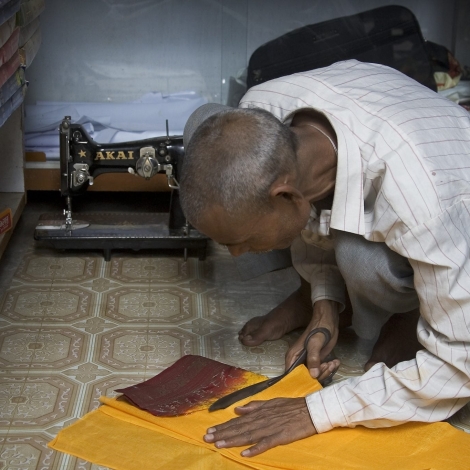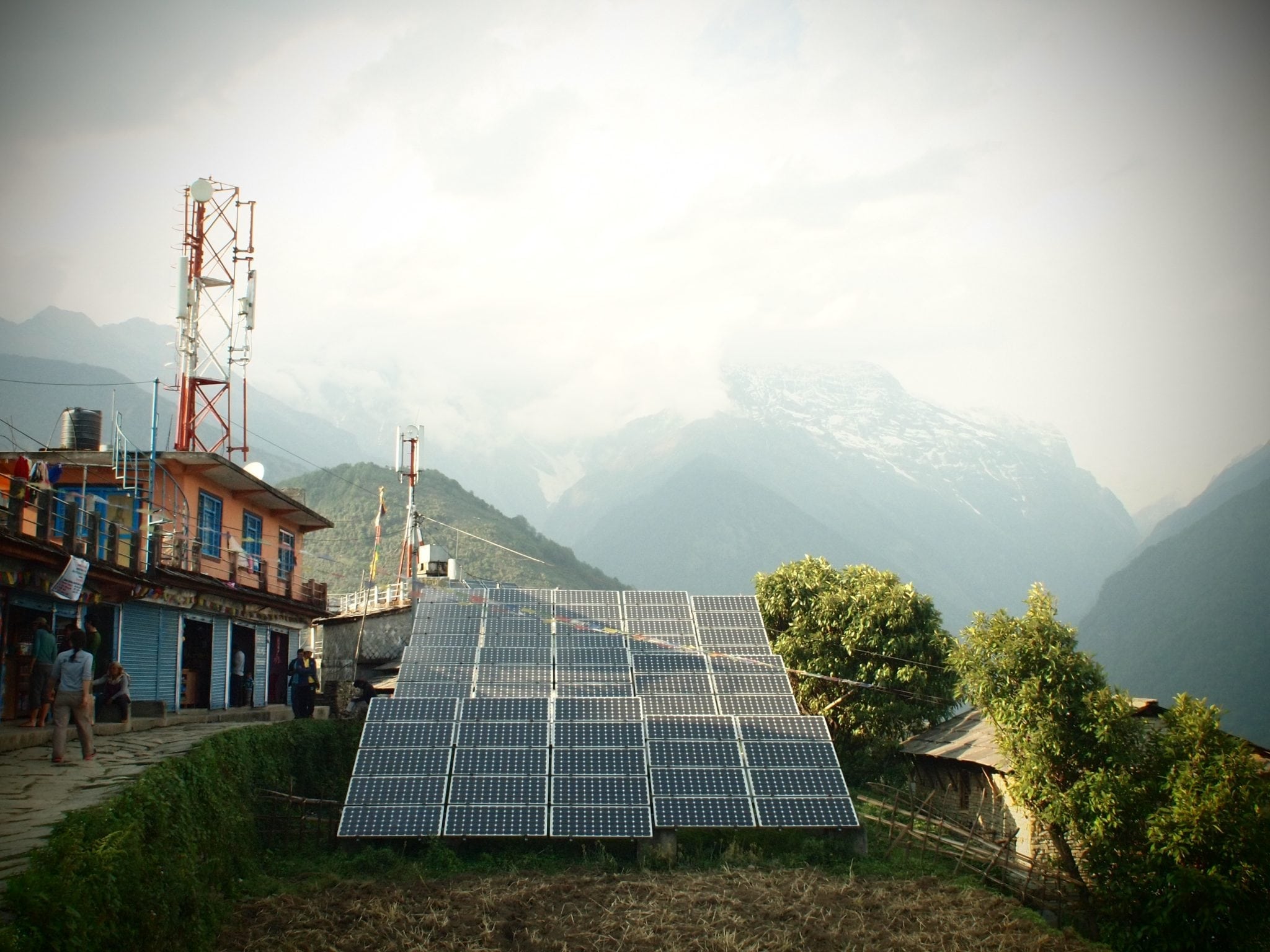Power cuts were frequent in Ahmedabad in Gujarat, India, and when it went out, sewing machines at a textile cooperative shut down. The women were losing money, so they sought help at the Solar Electric Light Company, SELCO. But powering their machines with solar panels would have been too costly. SELCO then took a different tack and asked if the machines, not the panels, might be the problem.
“We were designing solar for inefficient sewing machines. Nobody was complaining about inefficient sewing machines, but everybody was complaining about solar being expensive. And solar was expensive because we were designing for inefficiencies,” Harish Hande, SELCO’s founder, says in a video by the Yale School of Management and Change Observer.
The cooperative’s imported machines were overpowered, designed for thicker materials than the women worked with. SELCO helped the women take out a loan to buy five lower-powered machines. Then SELCO designed a custom photovoltaic system for the cooperative, which the women paid for with their loan.
Now the women can work when the power is out and they don’t have to pay electric bills. SELCO’s handling of the case demonstrates two key ways to increase access to electricity through renewable energy in developing countries: tailor a power system to each kind of business, and finance the payments. The advice is outlined in a new white paper by the Center for Science, Technology, and Society at Santa Clara University in Santa Clara, California.

Engineers improving access to renewable energy in developing countries install a photovoltaic panel system in the office of a microfinance institution in Togo. Photo by Amanda Locke
The need for power
Small businesses employ two-thirds of full-time workers in developing countries, and that number can be in the 90 percent range in some regions, according to the report.
Those businesses need power. A working power supply tops the lists of business owners’ needs in emerging economies. In three independent surveys, entrepreneurs have called the lack of electricity the biggest or the second biggest obstacle to their growth.
“It is a cruel catch-22 that those without energy access are denied the chance to work their way out of poverty,” Drew Corbyn, an energy consultant at Practical Action Consulting, who was not involved in writing the white paper, told E4C.
The distributed energy advantage
Governments have not been able to keep up with energy demand in developing countries, and their large, centralized power plants may not be the solution in the near future, the paper argues. Instead, small power generators in houses and businesses, and energy kiosks in neighborhoods, hold promise as a quicker way to deliver power.
“Not only do distributed energy solutions provide the only economically viable way of providing energy access in many areas, they can be deployed rapidly and target people living in poverty. Distributed solutions can provide the modern energy services that are fundamental to people’s lives and livelihoods; access to electric lights, mobile-phones and clean cookstoves can have a transformational effect for people living in poverty,” Corbyn says.
Distributed systems have at least one other advantage, they do not lose as much power during transmission. In developing countries, central power plants can lose up to a third of their power transmitting through power lines and through illegal taps, according to the World Bank.
Work-around solutions
Business owners with the means may buy a diesel generator to back up unreliable grid power. Diesel power can cost two to four times more than power from the grid. But the price is worth it to those who can afford it. Spotty power can cost businesses almost 5 percent of their sales, the World Bank has found. And that loss can approach 15 percent in India, and 25 percent in parts of Africa and South Asia.
Diesel is the go-to power source for supplemental energy because the generators are widely available and the upfront cost is often lower than that of renewable energy in developing countries. But the long-term cost can be higher. These are the Center for Science, Technology and Society’s recommendations.
Tailor the power system to the business
SELCO designed a PV system that fit the needs of the sewing cooperative. Systems that provide just enough power for a business to operate normally, but not more power, will be more affordable. Businesses that operate primarily during the day might not need lots of battery storage for a solar system, for example.
Manufacturing and processing plants with induction motors require a lot of power for a short period of time while they turn on – about five times as much as when they are operating in their steady state. Those businesses might consider selling electricity during steady-state operation to avoid letting their capacity to generate more power go to waste.
Excess power can be sold as a supplementary business on a smaller scale, too, such as selling cell phone charges.
Another way to reduce costs is to skip buying a power inverter, one of the costlier pieces of equipment in a PV system. That would work only if all of the machines the system powers run on direct current that PV panels produce. Some sewing machines have DC motors, for example. Laptops, too, such as these in a solar project for schools in Haiti.
“Encouraging productive use of energy is often critical to ensuring the long-term viability of mini-grid systems. Financial viability can be secured through an anchor load customer – such as a rice or maize mill or telecoms tower – that provide a reliable source of income to cover operation and maintenance costs, and any return on investment. Productive use of energy can also enable broader social and economic gains; increasing incomes and bringing new products and services to communities,” Corbyn says.
Better design means better financing
Financing options for renewable energy in developing countries are more and more plentiful. But to make them as attractive as possible, energy system designers can do two things: Improve the lifespan of their products and include remote monitoring technology.
Borrowers can lengthen the repayment periods of their loans when the product they are buying has built-in longevity.
And monitoring technology provides a window into a business’s power usage and productivity, information that can reduce a financial institution’s risk in loaning money. At the same time, remote monitoring can help prevent theft of the power. Power theft can be a problem in some parts of the world, as anyone who has seen an enormous tangle of wires tapping into power lines can attest.
A real business opportunity
In the end, these design recommendations are the foundation of profitable energy businesses.
“Earning a living from the supply of energy is a huge opportunity in a context where so many are underserved. The scale of the challenge, and the fact that many households actually pay more per unit of energy on poor quality traditional energy sources, represents a real opportunity for the private sector,” Corbyn says.
The full paper and supplementary videos are available for free download and streaming: Accelerating Widespread Adoption of Distributed Energy: Solutions: Targeting Small and Medium-sized Enterprises.

